Showing Spotlights 305 - 312 of 556 in category All (newest first):
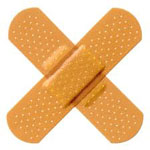 Burn injuries are one of the major global health problems. Every year 195,000 people from all over the world die because of fire alone. A burn injury may damage some or all skin layers and is caused by a hot solid, a hot liquid, or a flame. However, injuries related to electricity, radioactivity, ultraviolet radiation, chemicals and respiratory damage due to smoking are also considered as burn injuries. Besides cleaning the wound and applying various topical anti-microbial agents, wound dressings could be an effective solution in preventing microbial infections for burn care. The suitability of a burn wound dressing depends on a burn type. Conventional dressings are not efficient enough to induce haemostasis, adherence and in holding a moist environment around wound. Due to the advances in the field of nanotechnology, it is now possible to design nanofiber-based wound dressings where an electrospun-nanofibrous layer is applied to a basic support fabric material.
Burn injuries are one of the major global health problems. Every year 195,000 people from all over the world die because of fire alone. A burn injury may damage some or all skin layers and is caused by a hot solid, a hot liquid, or a flame. However, injuries related to electricity, radioactivity, ultraviolet radiation, chemicals and respiratory damage due to smoking are also considered as burn injuries. Besides cleaning the wound and applying various topical anti-microbial agents, wound dressings could be an effective solution in preventing microbial infections for burn care. The suitability of a burn wound dressing depends on a burn type. Conventional dressings are not efficient enough to induce haemostasis, adherence and in holding a moist environment around wound. Due to the advances in the field of nanotechnology, it is now possible to design nanofiber-based wound dressings where an electrospun-nanofibrous layer is applied to a basic support fabric material.
Jun 13th, 2012
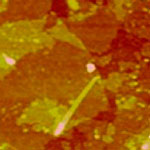 One type of biomolecules, enzymes, regulate almost all chemical reactions involved in numerous biological processes in living organisms and are also widely used in research and industry. Regulation of enzyme activity and stability is very important and has always attracted great attention. Various enzyme regulators, ranging from proteins, peptides, and synthetic organic molecules, have been discovered. Recently, nanomaterials evolve as promising alternatives for enzyme modulation. Nanomaterials provide large surface areas for biomolecule adsorption and can be engineered to present multiple surface functional groups for interacting with biomolecules, such as enzymes and/or their substrates. In a recent study, scientists started to explore the interactions between functionalized graphene oxide and serine proteases, a large family of enzymes with important biomedical and industrial applications.
One type of biomolecules, enzymes, regulate almost all chemical reactions involved in numerous biological processes in living organisms and are also widely used in research and industry. Regulation of enzyme activity and stability is very important and has always attracted great attention. Various enzyme regulators, ranging from proteins, peptides, and synthetic organic molecules, have been discovered. Recently, nanomaterials evolve as promising alternatives for enzyme modulation. Nanomaterials provide large surface areas for biomolecule adsorption and can be engineered to present multiple surface functional groups for interacting with biomolecules, such as enzymes and/or their substrates. In a recent study, scientists started to explore the interactions between functionalized graphene oxide and serine proteases, a large family of enzymes with important biomedical and industrial applications.
Jun 7th, 2012
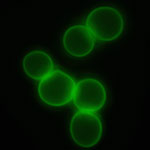 Modifying living cell by coating them with a nanolayer of functional materials in order to provide them with new structural and functional features has developed into a popular research area for bionanotechnology researchers. In contrast to genetic manipulation techniques, here the functionality of a cell is modified simply by attaching polymers or nanoparticles to the cell's surface. A recent Perspective paper covers the most interesting and promising work in this area and presents an outlook the major potential future directions. The article focuses on on cell encapsulation with Layer-by-Layer (LbL) self-assembly via sequential adsorption of oppositely charged components: polyelectrolytes, nanoparticles, and proteins.
Modifying living cell by coating them with a nanolayer of functional materials in order to provide them with new structural and functional features has developed into a popular research area for bionanotechnology researchers. In contrast to genetic manipulation techniques, here the functionality of a cell is modified simply by attaching polymers or nanoparticles to the cell's surface. A recent Perspective paper covers the most interesting and promising work in this area and presents an outlook the major potential future directions. The article focuses on on cell encapsulation with Layer-by-Layer (LbL) self-assembly via sequential adsorption of oppositely charged components: polyelectrolytes, nanoparticles, and proteins.
May 29th, 2012
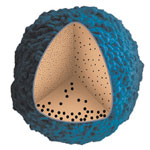 Researchers in China showed that nanoparticles smaller than 10 nm in diameter accumulate more efficiently and penetrate more deeply in tumors relative to their larger counterparts. Their findings have significant implications for the development of nanomaterials to diagnose and treat cancer. The enhanced tumor accumulation of the ultrasmall nanoparticles may be due, at least in part, to their prolonged blood circulation time. In contrast, most nanomaterials that enter the blood are rapidly cleared by tissue-resident macrophages in the liver and spleen. Ultimately, the ability of ultrasmall nanoparticles to diffuse deep within the tumor bulk may enable the design of nanoparticles that can carry therapeutic and diagnostic agents more efficiently into tumors.
Researchers in China showed that nanoparticles smaller than 10 nm in diameter accumulate more efficiently and penetrate more deeply in tumors relative to their larger counterparts. Their findings have significant implications for the development of nanomaterials to diagnose and treat cancer. The enhanced tumor accumulation of the ultrasmall nanoparticles may be due, at least in part, to their prolonged blood circulation time. In contrast, most nanomaterials that enter the blood are rapidly cleared by tissue-resident macrophages in the liver and spleen. Ultimately, the ability of ultrasmall nanoparticles to diffuse deep within the tumor bulk may enable the design of nanoparticles that can carry therapeutic and diagnostic agents more efficiently into tumors.
May 28th, 2012
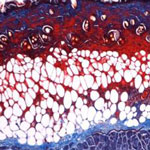 Candida albicans is a leading fungal cause of burn infections in hospital settings. The prevalence of invasive candidiasis in burn cases varies widely, but it accounts as high as 23% of severe infection with a mortality rate ranging from anywhere to 14% to 70%. In a recent pre-clinical study, a nitric oxide releasing nanoparticle platform, which has previously been shown to be antibacterial to both gram positive and negative bacteria, as well as an accelerator of wound healing in excisional animal models, was found to be efficacious in clearing candidal burn infections in mice. This study represents one of many pre-clinical investigations demonstrating the efficacy of the NO nanoparticles as a broad spectrum antimicrobial agent as well as wound healing accelerant.
Candida albicans is a leading fungal cause of burn infections in hospital settings. The prevalence of invasive candidiasis in burn cases varies widely, but it accounts as high as 23% of severe infection with a mortality rate ranging from anywhere to 14% to 70%. In a recent pre-clinical study, a nitric oxide releasing nanoparticle platform, which has previously been shown to be antibacterial to both gram positive and negative bacteria, as well as an accelerator of wound healing in excisional animal models, was found to be efficacious in clearing candidal burn infections in mice. This study represents one of many pre-clinical investigations demonstrating the efficacy of the NO nanoparticles as a broad spectrum antimicrobial agent as well as wound healing accelerant.
May 21st, 2012
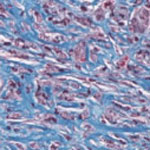 Wound healing is an exceedingly complex process, involving a multitude of signaling pathways, effector molecules, response phases, as well as a moderated balance between all these components. Nitric oxide (NO) plays a critical role in the wound-healing process via antimicrobial properties, modulation of platelet/cytokine function, vasodilatory effects, and promotion of angiogenesis and matrix deposition. While attempts to administer NO to wound areas have shown some promise, the current modalities all suffer from varying drawbacks, such as administration site irritation or the burden of large, expensive equipment. Researchers have now introduced a nanoparticle platform comprised of silane based sol-gel and sugar-derived glasses that can generate, store, and deliver NO in a controlled and sustained manner is utilized to enhance wound healing in immunodeficient mice.
Wound healing is an exceedingly complex process, involving a multitude of signaling pathways, effector molecules, response phases, as well as a moderated balance between all these components. Nitric oxide (NO) plays a critical role in the wound-healing process via antimicrobial properties, modulation of platelet/cytokine function, vasodilatory effects, and promotion of angiogenesis and matrix deposition. While attempts to administer NO to wound areas have shown some promise, the current modalities all suffer from varying drawbacks, such as administration site irritation or the burden of large, expensive equipment. Researchers have now introduced a nanoparticle platform comprised of silane based sol-gel and sugar-derived glasses that can generate, store, and deliver NO in a controlled and sustained manner is utilized to enhance wound healing in immunodeficient mice.
Mar 28th, 2012
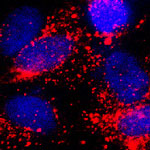 Nanotechnology offers new strategies to enable minimally invasive and localized approaches for diagnosing and treating cancer, thereby avoiding the serious side effects and shortcomings of chemotherapy. For instance, it has been shown that often less than 1% of the administered drug molecules during chemotherapy enter tumor cells and bind to the nuclear DNA. Another complication is drug resistance of cancer cells. This actually is one of the main causes of failure in the treatment of cancer. Cancer researchers are looking to nanoparticles as a drug carrier capable of localizing and directly releasing drugs into the cell nucleus, leading to a high therapeutic efficacy. Although increased therapeutic efficacy has been realized, there have been no reports on visualizing at nanoscale dimensions how nanoparticles interact with specific organelles. In a new breakthrough for nanomedicine cancer research, scientists have now reported the direct visualization of interactions between drug-loaded nanoparticles and the nucleus of a cancer cell.
Nanotechnology offers new strategies to enable minimally invasive and localized approaches for diagnosing and treating cancer, thereby avoiding the serious side effects and shortcomings of chemotherapy. For instance, it has been shown that often less than 1% of the administered drug molecules during chemotherapy enter tumor cells and bind to the nuclear DNA. Another complication is drug resistance of cancer cells. This actually is one of the main causes of failure in the treatment of cancer. Cancer researchers are looking to nanoparticles as a drug carrier capable of localizing and directly releasing drugs into the cell nucleus, leading to a high therapeutic efficacy. Although increased therapeutic efficacy has been realized, there have been no reports on visualizing at nanoscale dimensions how nanoparticles interact with specific organelles. In a new breakthrough for nanomedicine cancer research, scientists have now reported the direct visualization of interactions between drug-loaded nanoparticles and the nucleus of a cancer cell.
Mar 26th, 2012
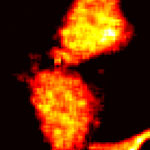 Green Fluorescent Protein (GFP) - originally found in a jellyfish - has played a crucial role in life science research, providing insights to many fundamental questions that have paved the way to the biology and medicine of the future. Since the mid-1990s, when the protein was successfully cloned, GFP can be found in research laboratories worldwide used as a visual marker of gene expression and protein localization, easily observed via light (optical) microscopy. GFP can be linked to other proteins and is primarily used to track dynamic changes in living cells. In 2008, biologists who discovered and developed the protein as a laboratory tool won a Nobel Prize for their work. Researchers in Spain have now demonstrated how GFP can also act as an efficient nano-thermometer inside cells.
Green Fluorescent Protein (GFP) - originally found in a jellyfish - has played a crucial role in life science research, providing insights to many fundamental questions that have paved the way to the biology and medicine of the future. Since the mid-1990s, when the protein was successfully cloned, GFP can be found in research laboratories worldwide used as a visual marker of gene expression and protein localization, easily observed via light (optical) microscopy. GFP can be linked to other proteins and is primarily used to track dynamic changes in living cells. In 2008, biologists who discovered and developed the protein as a laboratory tool won a Nobel Prize for their work. Researchers in Spain have now demonstrated how GFP can also act as an efficient nano-thermometer inside cells.
Mar 19th, 2012
 Burn injuries are one of the major global health problems. Every year 195,000 people from all over the world die because of fire alone. A burn injury may damage some or all skin layers and is caused by a hot solid, a hot liquid, or a flame. However, injuries related to electricity, radioactivity, ultraviolet radiation, chemicals and respiratory damage due to smoking are also considered as burn injuries. Besides cleaning the wound and applying various topical anti-microbial agents, wound dressings could be an effective solution in preventing microbial infections for burn care. The suitability of a burn wound dressing depends on a burn type. Conventional dressings are not efficient enough to induce haemostasis, adherence and in holding a moist environment around wound. Due to the advances in the field of nanotechnology, it is now possible to design nanofiber-based wound dressings where an electrospun-nanofibrous layer is applied to a basic support fabric material.
Burn injuries are one of the major global health problems. Every year 195,000 people from all over the world die because of fire alone. A burn injury may damage some or all skin layers and is caused by a hot solid, a hot liquid, or a flame. However, injuries related to electricity, radioactivity, ultraviolet radiation, chemicals and respiratory damage due to smoking are also considered as burn injuries. Besides cleaning the wound and applying various topical anti-microbial agents, wound dressings could be an effective solution in preventing microbial infections for burn care. The suitability of a burn wound dressing depends on a burn type. Conventional dressings are not efficient enough to induce haemostasis, adherence and in holding a moist environment around wound. Due to the advances in the field of nanotechnology, it is now possible to design nanofiber-based wound dressings where an electrospun-nanofibrous layer is applied to a basic support fabric material.
 Subscribe to our Nanotechnology Spotlight feed
Subscribe to our Nanotechnology Spotlight feed





